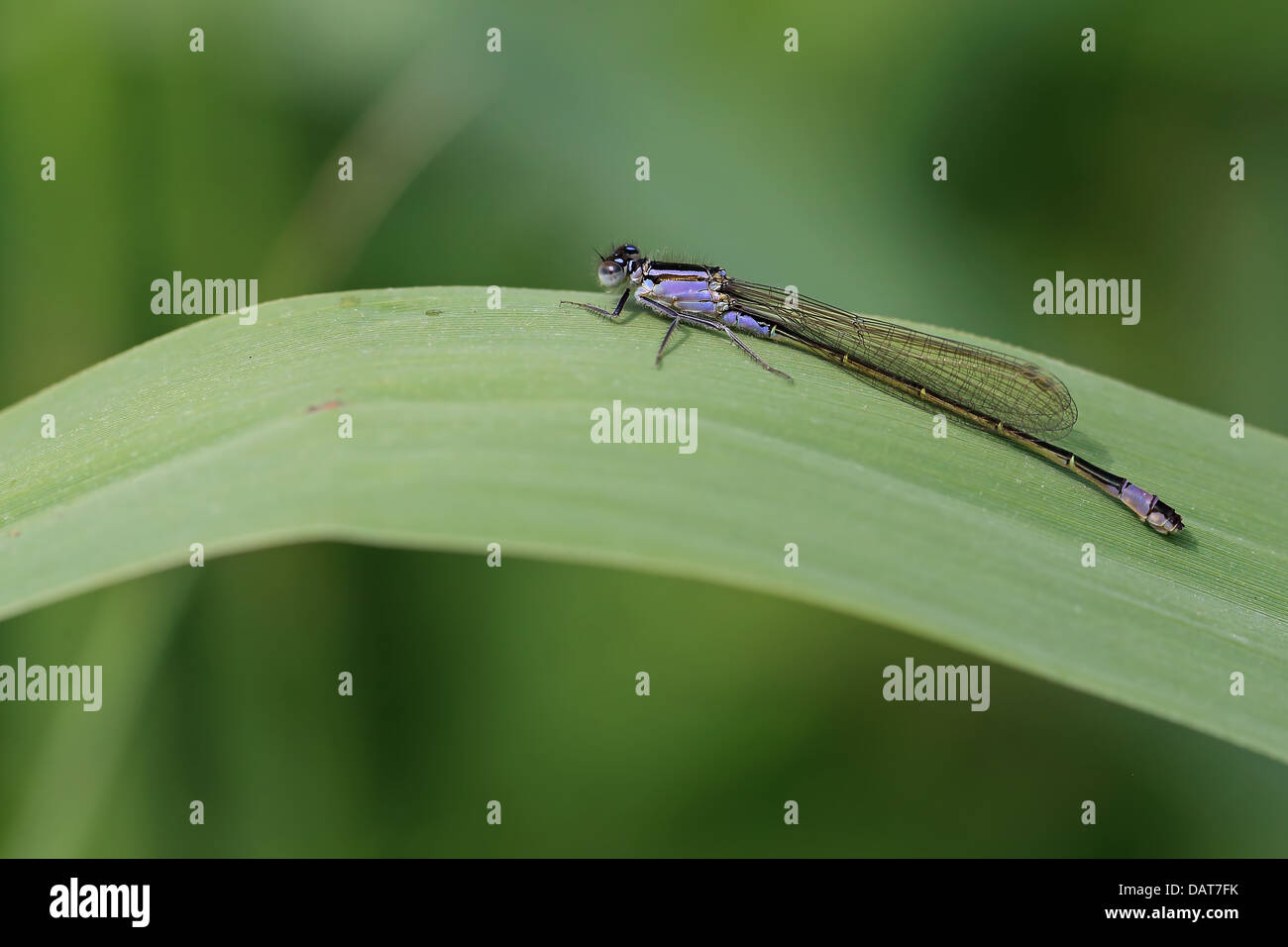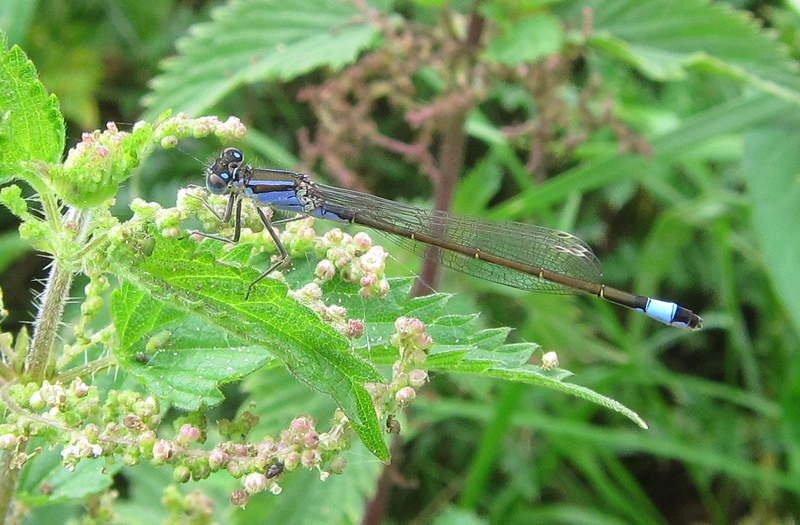

The maternally inherited symbiotic bacteria Wolbachia can be found in up to half of all arthropod species. The selective sweep of maternally inherited symbionts can lead to the hitchhiking of certain host haplotypes, which may not themselves be the major targets of selection. Infections with maternally inherited symbionts, for example, can cause loss of genetic diversity across entire populations because of differential selection pressures on the infected versus uninfected host lineages, a process that may masquerade as selection or drift.
#Female common bluetail damselfly full
Hidden processes and players may however confound these patterns, and challenge our full understanding of the evolutionary histories and genetic diversity of source and edge populations. Under these conditions, certain alleles and genotypes have been shown to spread in the newly colonized regions due to allele surfing, or due to selection for local adaptation in novel environments at the range limits. These patterns are often due to the action of drift during rapid demographic spatial expansion and colonization.

), range expansions lead to reduced genetic diversity and stronger genetic differentiation at a species range limits compared to the source populations. Range expansion studies have uncovered waves of demographic expansion in many species by comparing the genetic diversity of the initial source to that of the edge populations. These results also challenge population genetic studies that do not consider the prevalence of symbionts in many insects, which we show can impact geographic patterns of mitochondrial genetic diversity. Our findings provide an example of how endosymbiont infections can shape spatial variation in their host evolutionary genetics during postglacial expansion. The timing of the selective sweep associated with infected lineages was estimated between 20,000 and 44,000 years before present, which is consistent with the end of the last glacial period about 20,000 years. elegans, and, conversely, higher mitochondrial diversity in populations with low penetrance of Wolbachia (Ukraine, Greece, Montenegro and Cyprus). We found low mitochondrial haplotype diversity in the Wolbachia-infected north-western European populations (Sweden, Scotland, the Netherlands, Belgium, France and Italy) of I. Our data reveal (a) multiple Wolbachia-strains, (b) potential transfer of the symbiont through hybridization, (c) higher infection rates at higher latitudes, and (d) reduced mitochondrial diversity in the north-west populations, indicative of hitchhiking associated with the selective sweep of the most common strain. Here, we present the biogeographic variation in Wolbachia prevalence and penetrance across Europe and Japan (including samples from 17 populations), and from close relatives in the Mediterranean area (i.e. elegans, no study has screened for Wolbachia in the damselfly genus Ischnura.

Although there is accumulating data on the consequences of such expansion on the genetics of I. The common bluetail damselfly ( Ischnura elegans: van der Linden, 1820) has recently emerged as a model organism for genetics and genomic signatures of range expansion during climate change. hitchhike), resulting in low mitochondrial genetic variation across the host species range. Under sufficient selective advantage, the mitochondrial haplotype associated with the favoured maternally-inherited symbiotic strains will spread (i.e. Wolbachia typically spreads within host species by conferring direct fitness benefits, and/or by manipulating its host reproduction to favour infected over uninfected females. The maternally inherited bacterium Wolbachia is among the most widespread symbionts in insects. Investigating these genetic patterns is important, as they may reveal obscured processes and players. Evolutionary processes can cause strong spatial genetic signatures, such as local loss of genetic diversity, or conflicting histories from mitochondrial versus nuclear markers.


 0 kommentar(er)
0 kommentar(er)
